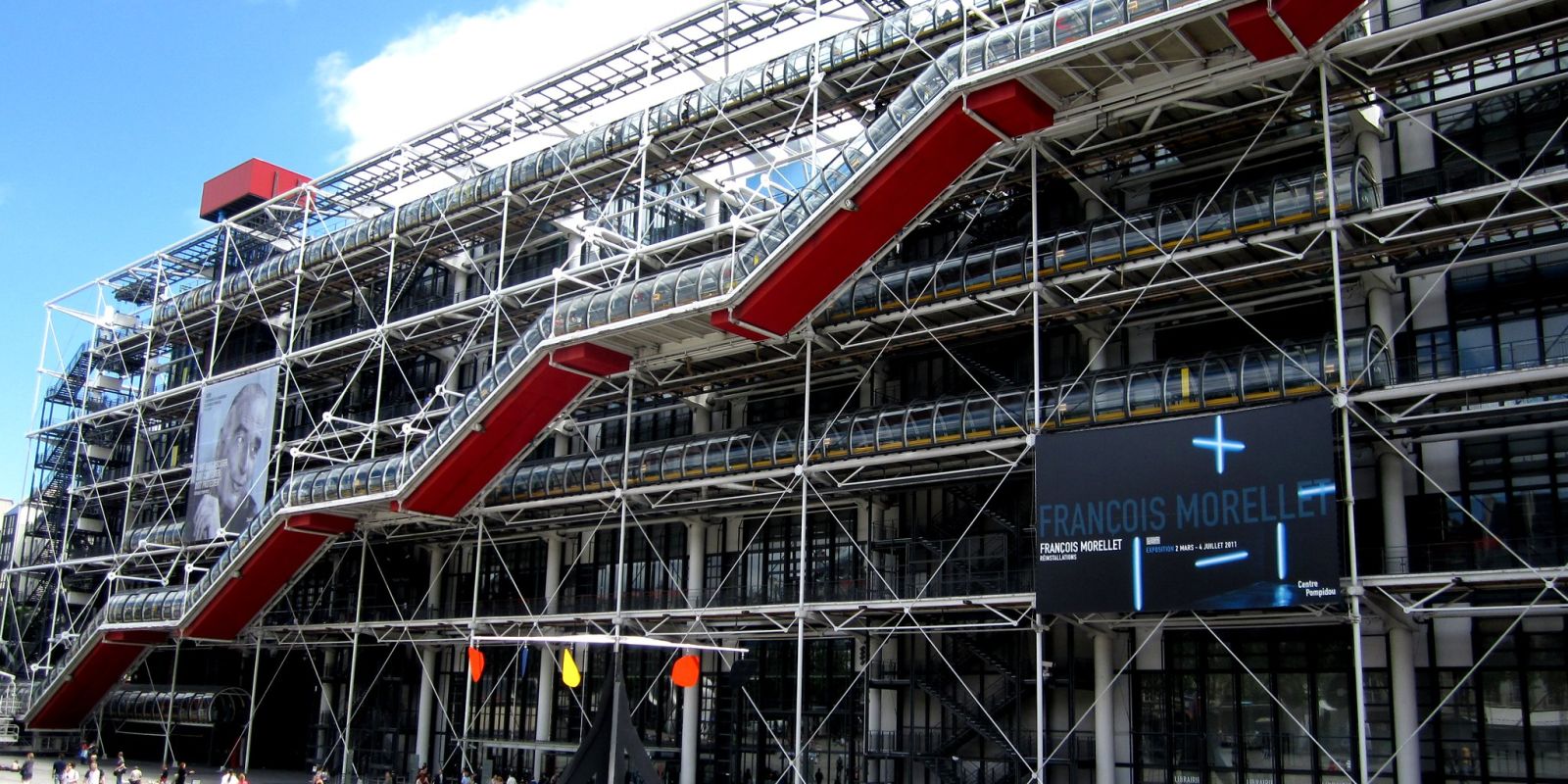Itinerary
A short, central walk.

8 stops
1. Drawings of the Temple Tower’s limits
Opposing the 3rd district’s Town Hall, one can observe strange blue drawings both on the street and the pavement. This marks the limits of the famous Temple Tower.
The Temple was a medieval fortress built by the Knights Templar from the XIIth century, as their European headquarters. The enclosure (called enclos du Temple) originally featured a number of buildings important to the running of the order, and included a church and a massive turreted keep known as Grosse Tour (great tower), and a smaller tower called Tour de César (Caesar’s Tower). The fortress was destroyed in 1808. Today the Temple Paris subway station stands on the old location.
2. Arts-et-Métiers Subway Station
Among the few Paris subway stations that are worth the look, this one, part of line 11, has been redecorated in 1994 by François Schuiten, the belgian comic book artist responsible for “Les Cités Obscures” (published in English as “Cities of the Fantastic”). One is under the impression of being in a submarine.
3. Auberge Nicolas Flamel
One of Nicolas Flamel’s houses, this one is the oldest stone house in the city. There is an old inscription on the wall : “We, ploughmen and women living at the porch of this house, built in 1407, are requested to say every day an ‘Our Father and an ‘Ave Maria’ praying God that His grace forgive poor and dead sinners.”
The ground floor currently contains a restaurant.
4. The Defender of Time
Not far from the Pompidou Center, tucked away in an passageway called Quartier de l’Horloge (Clock Quarter), is the reason why the place is named that way : a strange mechanized clock by French artist Jacques Monestier.
A man on a rock, with a sword and a shield, fights every hour from 9am to 10pm, since 1979, one of three animals : a bird, a dragon and a crab, which symbolize the sky, the earth and the sea. The man’s opponent is chosen randomly by the clock mechanism.
What happens at 12am, 6pm and 10pm ? We won’t tell you…
5. House of Gérard de Nerval
This is the house where the famous XIVth century French poet was born.
6. Centre Pompidou
How can you miss it ? Since its opening in 1977, the Centre Pompidou has had over 150 million visitors.
It houses a vast public library, the Musée National d’Art Moderne which is the largest museum for modern art in Europe, and IRCAM, a centre for music and acoustic research.
Because of its location, the Centre is known locally as the Beaubourg. It is named after Georges Pompidou, the President of France from 1969 to 1974 who decided its creation.
The Centre was designed by Italian architect Renzo Piano; British architect Richard Rogers; and Italian architect Gianfranco Franchini.
The Place Georges Pompidou in front of the museum is noted for the presence of street performers, such as mimes and jugglers. In the spring, miniature carnivals are installed temporarily into the place in front with a wide variety of attractions: bands, caricature and sketch artists, tables set up for evening dining, and even skateboarding competitions.
Source : Wikipedia contributors, “Centre Georges Pompidou“
7. Square of the Tour Saint-Jacques
This haussmannian garden surrounding the gothic XVIth-century Saint-Jacques bell tower is the first of its kind in Paris. The tower, one of the starting points for the Compostela pilgrim route, is not opened to the public. There is a weather station on the top platform.
8. Hôtel de Ville
The big (and stunning) City Hall of Paris (l’Hôtel de Ville) was build in the XIXth century from blueprints by architects Théodore Ballu and Édouard Deperthes.
Its neo-renaissance facade is largely inspired by the one of the previous palace, build between 1533 and 1628 – although Paris’s administration has been located at this spot since 1357 – but destroyed by fire during the Paris Commune in May 1871.
The Place de Grève, now called Place de l’Hôtel-de-Ville (since 1803) is a pedestrian square since 1982. It is here that Nicolas Pelletier, the first ever convict to be executed with a guillotine, found his death on April 25, 1792.
The Hôtel de Ville is the largest City Hall in Europe. Visits are only possible during the Journées du patrimoine.
CulturalCuriosity
Map, navigation, practical information, extra pictures and more are available on the Paris Parcours app.
